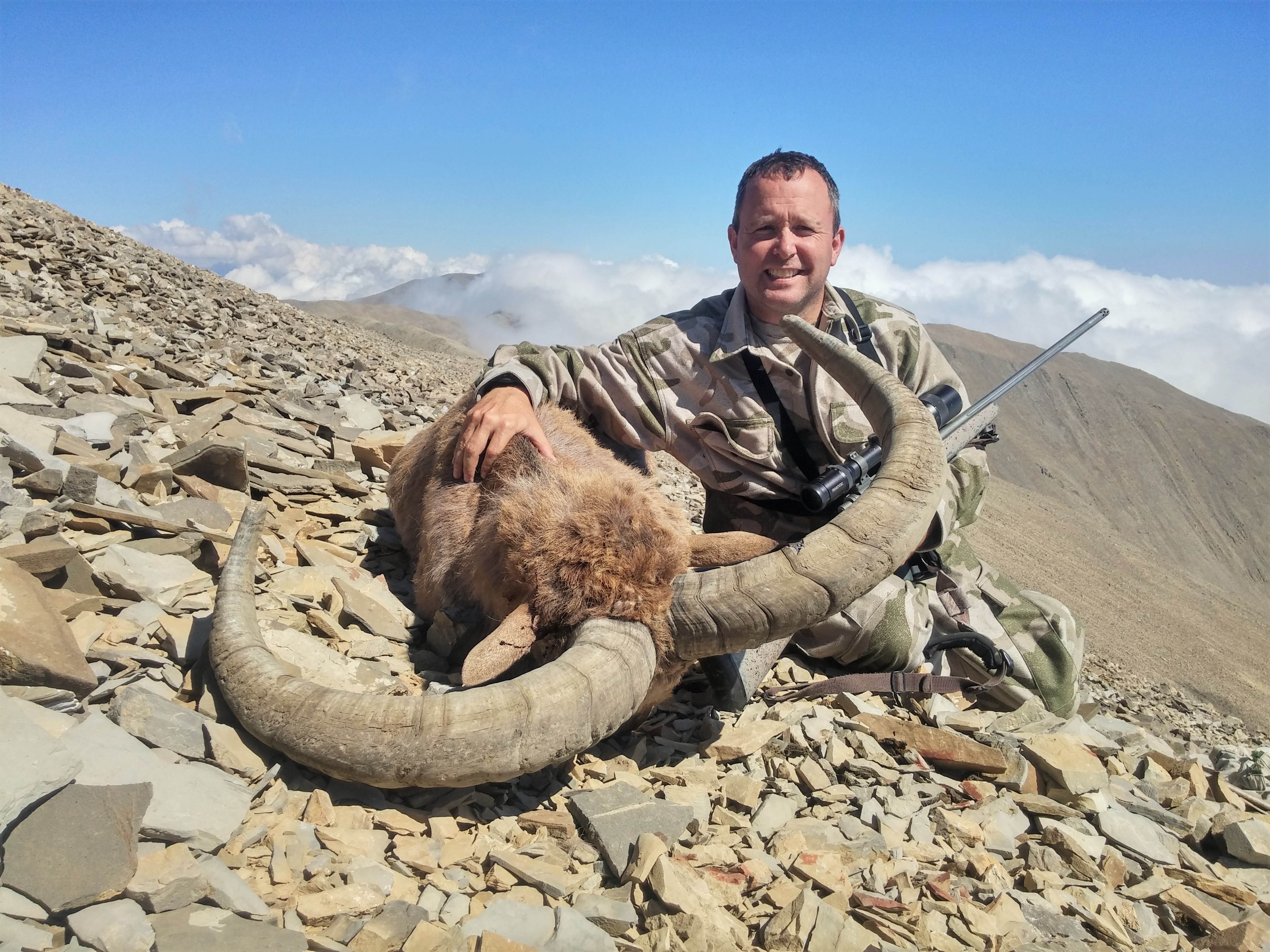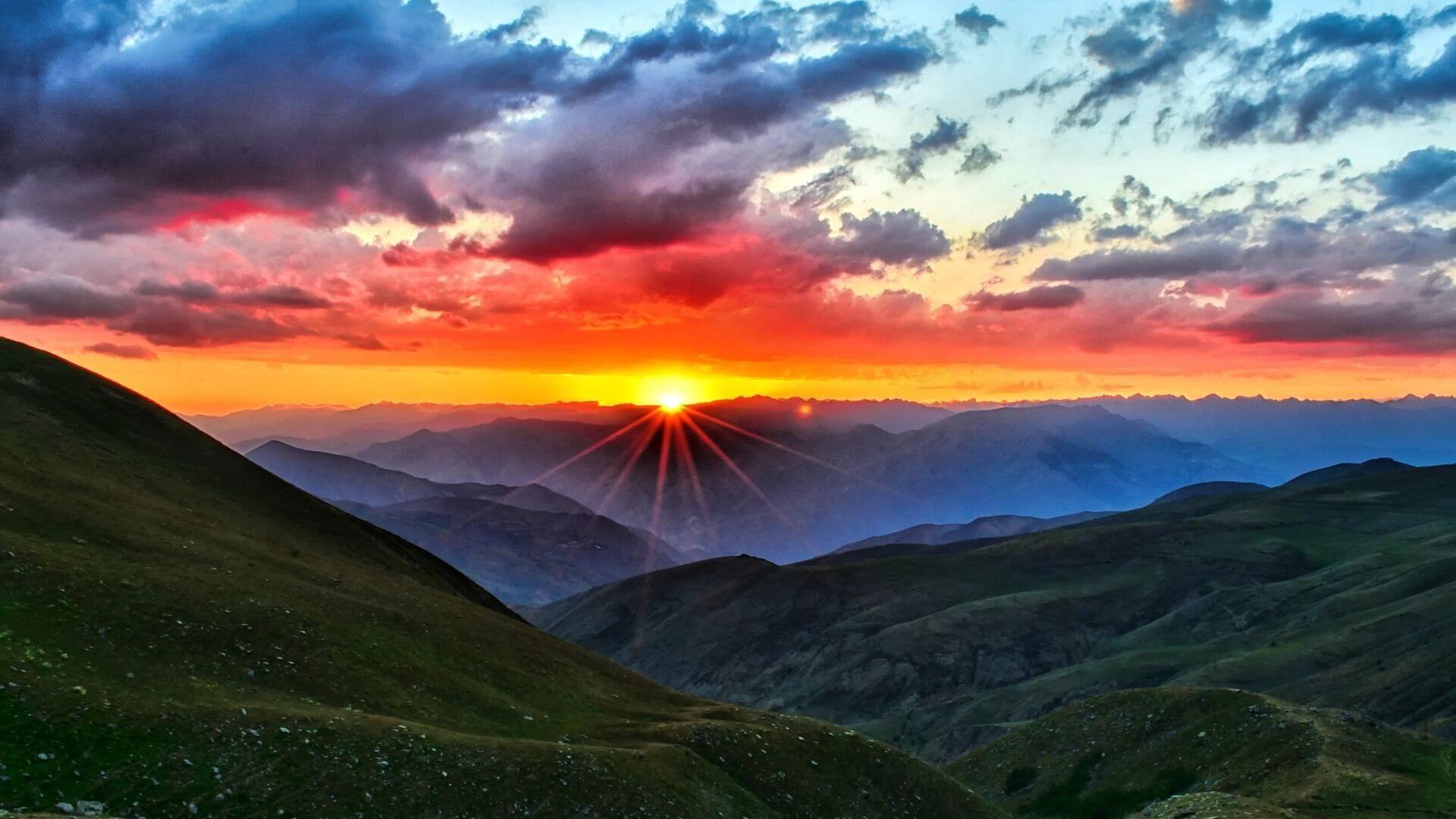DAGESTAN TUR ( Capra cylindricornis )
The Republic of Azerbaijan, located in the south-eastern Caucasus, is home to the Eastern Tur (Capra cylindricornis) also known as Dagestan Tur. Only here, in the far east of the Caucasus, lives the purebred Eastern Tur, which is also known to the international trophy hunters as the Dagestan Tur. The name of this elusive animal comes from the Russian language and means Caucasian wild goat. Taxonomic status of Tur is unclear since some zoologist suggest three subspecies while the other recognise only two.
With sheep-analogue horns and a goat-like poise, the animal has the nature of a cross between a sheep and a wild goat. The lack of any scientific research regarding the species renders it further difficult for authorities to classify this ambiguous game animal. This is an animal with a sheep like horns and a goat like life style. Therefore, the species counts for both Ovis and Capra Slams by GSCO regadless of its taxonomic category.
Dagestan Tur has an unusual horn shape when compared to other sheep and ibex subspecies. They grow in an outward and slightly upward direction and then backwards towards the neck. With some specimens it may make a final curve and go upwards. But this is not so common with older billies since the horns tend to broom off at the ends. The horn tips are usually worn down to a blunt end with the males over eight or nine years of age.
Average horn length for Dagestan Tur should be considered at 30’’- 32’’, though bigger ones are up for grabs for those who are enthusiastic enough to put in the extra effort to collect them. We rate any Dagestan Tur with over 35 inch horn lenght as a very good specimen and the ones over 40 inch mark to be exeptional. Almost every year, a few of these outstanding 40 inch plus trophies are collected in the Sheki area we hunt. It is noted that the maximum annual horn growth in two year old Dagestan Tur rams can reach up to 64/8 inches (16,5 cm). By the tenth year, the annual growth increments are reduced to 14/8 inches (4cm). The Eastern Tur bears the thickest horns of all the Capra family. Bases can measure 124/8 inches (32cm)
Azerbaijan was a part of USSR until the break up of communist system. As with all other big game hunting, Tur hunting too during this period of time was available only for a few select people. The trophy hunting for outsiders was very restricted until Basil Bradbury found a way in 1969 to hunt a Dagestan Tur in Caucasus mountains of Azerbaijan. Although this hunt seemed like a distinctive breakthrough at the time and gave hopes to those who wanted to benefit from the tremendous hunting potential of this untouched mass of land, it was actually far from pioneering any future opportunities since B. Bradburry had gone there through Iran bypassing the Moscow bureaucracy. However only a year later Chris Klineburger received a permission to do a hunting expedition in the Caucasus mountains after an endless serious negotiations with Inturist which was an official agency that handled all tourism throughout the Union. This was a six week exploratory trip and resulted in a partnership between Klineburger brothers and Inturist that allowed foreign hunters to hunt in USSR, not only Tur but a wealth of other game animals as well.
On this 1970 trip C.Klineburger and Dr. A.Twomey hunted in Kubinsk Wildlife reserve also known to international hunters as Kuba area. In the following years a good number of foreign trophy animals hunted this area. As a general rule, main way of hunting was “drives” which was convenient for most hunters as well as for the locals. In late 90s a group of Turkish hunters involved with the opening of a new hunting area farther west of Kubinsk, near the Georgian border. Known as Sheki, this area promised the Dagestan Tur hunters better trophy quality and stalking way of hunting.
SEASON & WEATHER
The hunting season for Dagestan Tur in Azerjaijan Starts by June 1st and runs through October 15. There was a period of time when the hunters could hunt in May when the animals could be found at lower elevations. However republic’s Ministry of Ecology and Natural Resources announced the changes for the hunting season in Azerbaijan in 2019 and made it to start by June 1st.
Early season hunts in June stil can be relatively easy and effective. Green grass that starts to grow at lower elevations become the only source of food for the Dagestan Tur after a prolonged winter. Sometimes the animals have no choice but to come to these paches of emerging green grass and graze. On the other hand, the animals may prefer the higher parts of the mountains, if the spring comes early and the snow melts by June.
June can be rainy on the Caucasus mountains and the temperatures will be at moderate levels. Precipitation is mostly in the form of short heavy showers, sometimes with thunder storms. However July and early August tend to be the hottest time of year on these mountains, sometimes with extreme heat (over 32C / 89F) although weather conditions can change abruptly. It is not unheart of a sunny day changing to snow/hail and then back to sunny within a few hours. Summer snowfalls and storms are possible but mist and cloud are frequent on these mountains. Fog can move in very fast and cover the entire area for some time, sometimes for a whole day or even longer. On the other hand, this can present good cover for the hunter who is waiting to close in on a spotted billy if the fog is to lift in a relatively short period of time. Dagestan Tur prefer the comforting breeze at the top of the mountain and stay bedded there for the greater part of the day when the temperatures are high. But if the sun is really strong, they may go down to the wooded parts of the mountains or stay in shaded shoots or ravines to seek cover.
Late August, September and early October may provide the best hunting conditions although there is no guarantee for anything on the Caucasus range. The skin may be a bit longer than summer cape and some of the billies may have started to turn a bit darker. They can spend more time grazing to store a bit more fat before the brutal winter of Caucasus arrive. This can give the hunter better chance to spot animals and enough time and opportunity to stalk
AREA & ALTITUDE
The Greater Caucasus range extends in the west to east direction for approximately 750 miles (1,200 km) from the Taman Peninsula on the Black Sea to the Absheron Peninsula on the Caspian Sea. Eastern part of this untouched terrain nestles between the Caspian Sea and the Black Sea, is the home for elusive Eastern Tur. Dagestan Tur distrubition range streches about 310 miles (500km) between Babadagh in the east (Azerbaijan) and Mount Kazbek in the west (Russia) and includes Azerbaijan, Georgia and some parts of Russian Federation. However the stronghold of these animals has always been Azerbaijan since the southern slopes of the Greater Caucasus are steeper than the northern side thus are is preferred by the mature male populations.
Caprinae Safaris hunt only the hunting grounds around the town of Sheki. We utilise 4 different camps located on the mountains around the town. Sheki which is a jumping point for our hunts can be reached within 4-5 hours drive from the capitol city of Baku that is the only port of entry to Azerbaijan. The camping areas can be reached on horse back with a horse ride of 3-6 hours.
Tur inhabits the elevation of 8,000 – 13,000 feet (2,600 - 4,000 m) in alpine and subalpine meadows, and river valleys in or adjacent to steep, rocky places. However most populations spend the summer time on northern slopes in alpine areas at around 8,200 -10,500 feet (2,500-3,200 m) and on southern slopes in winter at lower altitudes. As a general rule, males prefer higher, gentler slopes, and open habitats while females use steeper, and open, sparsely forested areas at lower elevations.
ACCOMMODATIONS & HUNTING METHOD .
We set up tent camps on suitable locations of the mountains. These places has to be out of Tur’s vision since the animals have extremely good eye sight and can detect movements from long distances. The local outfitter built a few small size concrete sheds on some parts of the mountains that can be used as a camp too. But these are normally used as a kitchen or mess hall. There is no electricity in the camps as the generator would make too much noise that can bother animals. The camping areas can only be reached on horseback. Some camps can take as long as six hours but most of them are within the reach of about 4 hours horse ride.
As a general rule, hunters are required to hunt on foot from the camps, although there may be exceptions to the rule where horses can be used to some extend while hunting. Only one out of four different camps enables us to use horses during the hunt.
Adult male groups consistently use the same trails, resting sites, and feeding areas. So the local guides usually have a good knowledge of the localities of Dagestan Tur. Frequently there are Tur trails in many parts of the mountains which makes walking easier for the hunter. But sometimes hunters are required to leave the trails and take the less beaten paths. Eastern Tur hunt known to be one of the most physically challaging hunts. So getting in shape before the hunt helps and makes the hunt more enjoyable.
It is not uncommon to observe big groups of Tur, consisting of 50-200 rams. In the areas we prefer to hunt, animals are in healthy numbers and hunters can expect to see a good number of representative sized rams every day






